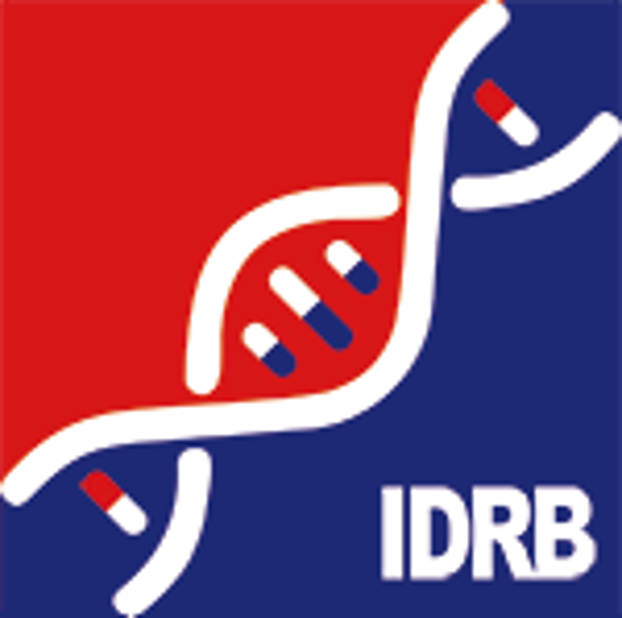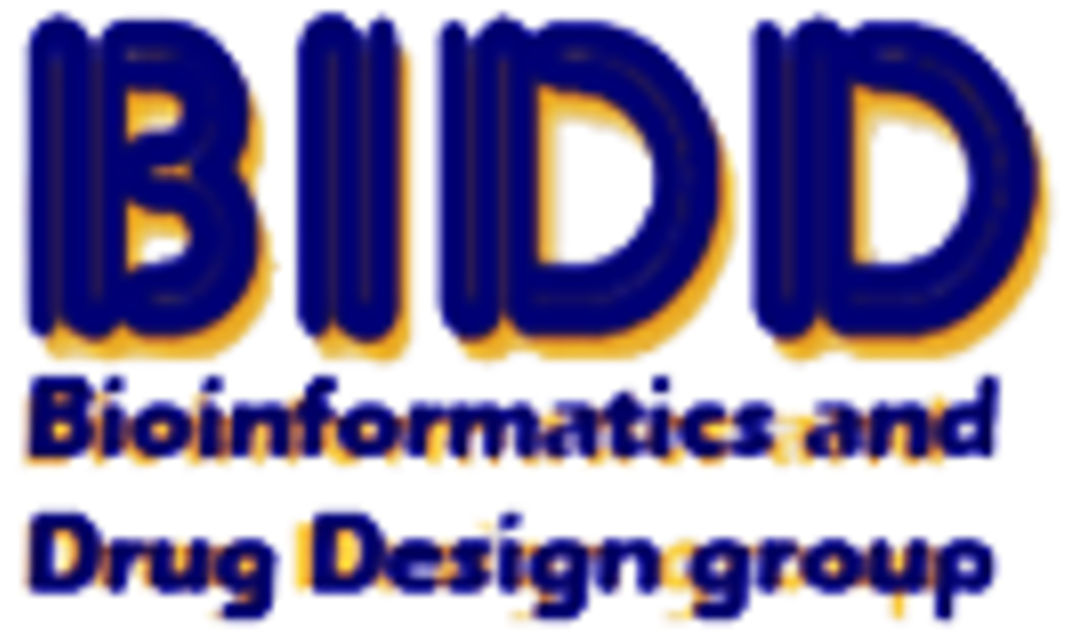| Target Validation Information | |||||
|---|---|---|---|---|---|
| Target ID | T77913 | ||||
| Target Name | Histamine H1 receptor | ||||
| Target Type | Successful |
||||
| Drug Potency against Target | Pheniramine | Drug Info | IC50 = 33.9 nM/L | [1] | |
| Ketotifen | Drug Info | IC50 = 52 nM | [2] | ||
| Cyclizine | Drug Info | IC50 = 5420 nM | [2] | ||
| Cinnarizine | Drug Info | IC50 = 1870 nM | [2] | ||
| Azelastine | Drug Info | IC50 = 4000 nM/L | [3] | ||
| 4-(4-butylpiperidin-1-yl)-1-o-tolylbutan-1-one | Drug Info | Ki = 610 nM | [4] | ||
| Chlorpheniramine | Drug Info | IC50 = 36 nM | [2] | ||
| Cetirizine | Drug Info | Ki = 6 nM | [5] | ||
| AR-129330 | Drug Info | IC50 = 150 nM | [6] | ||
| 2-(9,10-dihydroanthracen-9-yl)-N-methylethanamine | Drug Info | Ki = 48 nM | [7] | ||
| R-dimethindene | Drug Info | Ki = 0.4 nM | [8] | ||
| 9-(Aminomethyl)-9,10-dihydroanthracene | Drug Info | Ki = 197 nM | [7] | ||
| N-methyl-3,3-diphenylpropan-1-amine | Drug Info | Ki = 64 nM | [7] | ||
| N,N-dimethyl-4,4-diphenylbutan-1-amine | Drug Info | Ki = 70 nM | [7] | ||
| OCTOCLOTHEPIN | Drug Info | Ki = 0.19 nM | [9] | ||
| Antazoline | Drug Info | IC50 = 38.4 nM/L | [1] | ||
| Diphenhydramine | Drug Info | IC50 = 1460 nM | [2] | ||
| 1-(4-p-Tolyl-butyl)-piperidine | Drug Info | Ki = 3200 nM | [10] | ||
| 9-(2-aminoethyl)-9,10-dihydroanthracene | Drug Info | Ki = 137 nM | [7] | ||
| Promethazine | Drug Info | IC50 = 340 nM | [2] | ||
| Ergotidine | Drug Info | Ki = 10 nM | [11] | ||
| Terfenadine | Drug Info | IC50 = 200 nM/l | [12] | ||
| Trimeprazine | Drug Info | IC50 = 19 nM | [2] | ||
| Diphenyl(piperidin-4-yl)methanol | Drug Info | Ki = 659 nM | [10] | ||
| Loratadine | Drug Info | IC50 = 50 nM/l | [13] | ||
| Epinastine | Drug Info | IC50 = 30000 nM | [14] | ||
| R-226161 | Drug Info | Ki = 74 nM | [15] | ||
| Triprolidine | Drug Info | IC50 = 5.74 nM | |||
| RUPATADINE | Drug Info | IC50 = 3.9 nM | [16] | ||
| Emedastine | Drug Info | Ki = 1.3 nM | [17] | ||
| MDL-28163 | Drug Info | IC50 = 59 nM | [16] | ||
| Carebastine | Drug Info | IC50 = 0.17 nM/ml | [18] | ||
| 9-Phenyl-2,3-dihydro-1H-indeno[2,1-c]pyridine | Drug Info | IC50 = 53 nM | [19] | ||
| SCH-37370 | Drug Info | IC50 = 100 nM | [16] | ||
| Tranilast | Drug Info | IC50 = 100000 nM | [20] | ||
| Mepyramine | Drug Info | IC50 = 855000 nM | [2] | ||
| KF-A6 | Drug Info | IC50 = 3600 nM | [21] | ||
| Azatadine | Drug Info | IC50 = 40000 nM | |||
| Oxatomide | Drug Info | IC50 = 4.5 nM | [2] | ||
| 4,4-Diphenylbutan-1-amine | Drug Info | Ki = 1670 nM | [7] | ||
| N,N-dimethyl-2,2-diphenylethanamine | Drug Info | Ki = 5172 nM | [7] | ||
| N,N-Dimethyl-3,3-diphenylpropan-1-amine | Drug Info | Ki = 75 nM | [7] | ||
| 9-(2-aminopropyl)-9,10-dihydroanthracene | Drug Info | Ki = 175 nM | [7] | ||
| 3,3-diphenylpropan-1-amine | Drug Info | Ki = 2758 nM | [7] | ||
| N-methyl-4,4-diphenylbutan-1-amine | Drug Info | Ki = 386 nM | [7] | ||
| DIMEBOLIN | Drug Info | IC50 = 158 nM | [22] | ||
| Olopatadine | Drug Info | Ki = 31.6 nM | [23] | ||
| Bepotastine | Drug Info | IC50 = 101 nM | |||
| Action against Disease Model | Doxepin | binding to guinea-pig brain(Cerebral cortex) Ka :1.7x10(10) | [24] | Drug Info | |
| Bromodiphenhydramine | Inhibition of [3H]mepyramine binding in rat brain Ki: 13.0 nM | Drug Info | |||
| Cyproheptadine | The aim of this study is to find a relationship between serotonin (5-HT) and its metabolite 5-hydroxy indol acetic acid (5-HIAA) in hippocampus, frontal neocortex and platelets.Serotonin and 5-HIAA were measured in cultured neurons and compared with those produced by h uMan platelets. The cortical neuronal 5-HIAA/serotonin ratio was 4.7 and for hippocampal neurons it was 3.2. In h uMan platelets, this ratio was 1.35 suggesting that the highest serotonin metabolism occurs in the frontal neocortex followed by the hippocampus and platelets. In the presence of 0.3 microM ofp-chlorophenylalanine both cultured neurons and platelets exhibited an approximately 50% decrease in serotonin and 5-HIAA concentration suggesting similarities in the metabolic profile in both preparations. In addition, we found that serotonin by itself does not play any role in platelet aggregation but potentiates this phenomenon in the presence of calci uM ionophore A23187. This synergistic interaction between serotonin (2-5 microM) and A23187 (0.5-2 microM) was inhibited by serotonin receptor blockers [methysergide (IC50 = 18 microM) and cyproheptadine (IC50, 20 microM)] and calci uM channel blockers (verapamil and diltiazem, IC50 = 20 and 40 microM, respectively) that indicate both mechanisms are receptor mediated. Similarly, U73122, an inhibitor of phospholipase C (PLC), blocked the synergistic effect of serotonin and ionophore at an IC50 value of 9.2 microM. Wortmannin, a phosphoinositide 3-kinase (PI 3-K) inhibitor, also blocked the response (IC50 = 2.6 microM) by inhibiting respiratory burst. However, neither genistein, a tyrosine-specific protein kinase inhibitor, nor chelerythrine, a protein kinase C (PKC) inhibitor, affected aggregation. Our results are strongly suggestive of a synergistic interaction between serotonin type-2 and Ca-ionophore via a PLC/Ca signalling pathway. | [25] | Drug Info | ||
| Mizolastine | inhibited with high affinity the binding of [3H]pyrilamine to histamine H1 receptors in guinea pig cerebellar membranes and sections. IC50: 47 nM/L | [13] | Drug Info | ||
| Carbinoxamine | Inhibition of [3H]mepyramine binding in rat brain Ki: 2.3 nM | Drug Info | |||
| Phenindamine | Inhibition of [3H]mepyramine binding in rat brain Ki: 20.0 nM | Drug Info | |||
| Mequitazine | binding of [???H]mepyramine to guinea pig lung IC50: 1 nM | Drug Info | |||
| Tranilast | IC50 on vascular endotheli uM growth factor-induced chemotaxis in h uMan dermal microvascular endothelial cells: 135000nM, | Drug Info | |||
| Diphenylpyraline | Inhibition of [3H]mepyramine binding in rat brain Ki: 3.2 nM | Drug Info | |||
| Dimethindene | Inhibition of [3H]mepyramine binding in rat brain Ki: 8.0 nM | Drug Info | |||
| Acrivastine | Constitutive H1 receptor activity (inverse agonism) as measured by inhibition of basal l uMinescence in COShuH1 cells, IC50: 40 nM | [26] | Drug Info | ||
| Methdilazine | Inhibition of [3H]mepyramine binding in rat brain Ki: 2.3 nM | Drug Info | |||
| References | |||||
| REF 1 | Inhibition of histamine-induced human conjunctival epithelial cell responses by ocular allergy drugs. Arch Ophthalmol. 1999 May;117(5):643-7. | ||||
| REF 2 | Inhibition of histamine release from human lung in vitro by antihistamines and related drugs. Br J Pharmacol. 1980 Aug;69(4):663-7. | ||||
| REF 3 | The interaction of azelastine with human lung histamine H1, beta, and muscarinic receptor-binding sites. J Allergy Clin Immunol. 1989 Apr;83(4):771-6. | ||||
| REF 4 | J Med Chem. 2010 Sep 9;53(17):6386-97.Discovery of N-{1-[3-(3-oxo-2,3-dihydrobenzo[1,4]oxazin-4-yl)propyl]piperidin-4-yl}-2-phenylacetamide (Lu AE51090): an allosteric muscarinic M1 receptor agonist with unprecedented selectivity and procognitive potential. | ||||
| REF 5 | Binding characteristics of cetirizine and levocetirizine to human H(1) histamine receptors: contribution of Lys(191) and Thr(194). Mol Pharmacol. 2002 Feb;61(2):391-9. | ||||
| REF 6 | Bioorg Med Chem Lett. 2009 Nov 1;19(21):6166-71. Epub 2009 Sep 6.Pyrimidine-based antagonists of h-MCH-R1 derived from ATC0175: in vitro profiling and in vivo evaluation. | ||||
| REF 7 | Bioorg Med Chem. 2009 Sep 15;17(18):6496-504. Epub 2009 Aug 13.Synthesis, structure-affinity relationships, and modeling of AMDA analogs at 5-HT2A and H1 receptors: structural factors contributing to selectivity. | ||||
| REF 8 | J Med Chem. 2009 Sep 10;52(17):5307-10.Characterization of novel selective H1-antihistamines for clinical evaluation in the treatment of insomnia. | ||||
| REF 9 | J Med Chem. 2010 Oct 14;53(19):7021-34.Exploring the neuroleptic substituent in octoclothepin: potential ligands for positron emission tomography with subnanomolar affinity for |A(1)-adrenoceptors. | ||||
| REF 10 | Bioorg Med Chem Lett. 2009 Sep 1;19(17):5043-7. Epub 2009 Aug 5.Structural determinants for histamine H(1) affinity, hERG affinity and QTc prolongation in a series of terfenadine analogs. | ||||
| REF 11 | Major advances in the development of histamine H4 receptor ligands. Drug Discov Today. 2009 Aug;14(15-16):745-53. doi: 10.1016/j.drudis.2009.05.007. Epub 2009 May 27. | ||||
| REF 12 | Absence of an effect of terfenadine on guinea pig brain histamine H1-receptors in vivo determined by receptor binding techniques. Arzneimittelforschung. 1982;32(9a):1167-70. | ||||
| REF 13 | In vivo and in vitro interaction of the novel selective histamine H1 receptor antagonist mizolastine with H1 receptors in the rodent. Arzneimittelforschung. 1995 May;45(5):551-8. | ||||
| REF 14 | Comparison of anti-allergic activities of the histamine H1 receptor antagonists epinastine, ketotifen and oxatomide in human leukocytes. Arzneimittelforschung. 1995 Jan;45(1):36-40. | ||||
| REF 15 | Bioorg Med Chem. 2007 Jun 1;15(11):3649-60. Epub 2007 Mar 21.Tricyclic isoxazolines: identification of R226161 as a potential new antidepressant that combines potent serotonin reuptake inhibition and alpha2-adrenoceptor antagonism. | ||||
| REF 16 | J Med Chem. 2005 Oct 20;48(21):6523-43.Designed multiple ligands. An emerging drug discovery paradigm. | ||||
| REF 17 | Emedastine: a potent, high affinity histamine H1-receptor-selective antagonist for ocular use: receptor binding and second messenger studies. J Ocul Pharmacol. 1994 Winter;10(4):653-64. | ||||
| REF 18 | Towards the optimal antihistamine: studies with ebastine. Inflamm Res. 1998;47 Suppl 1:S36-7. | ||||
| REF 19 | Bioorg Med Chem Lett. 2000 Jun 5;10(11):1277-9.Conformationally-restricted ligands for the histamine H1 receptor. | ||||
| REF 20 | Mechanism of inhibitory action of tranilast on the release of slow reacting substance of anaphylaxis (SRS-A) in vitro: effect of tranilast on the release of arachidonic acid and its metabolites. Jpn J Pharmacol. 1988 Jan;46(1):53-60. | ||||
| REF 21 | Antimicrob Agents Chemother. 2007 Nov;51(11):4133-40. Epub 2007 Sep 10.Design, synthesis, and evaluation of 10-N-substituted acridones as novel chemosensitizers in Plasmodium falciparum. | ||||
| REF 22 | Bioorg Med Chem Lett. 2010 Jan 1;20(1):78-82. Epub 2009 Nov 14.Synthesis and biological activity of 5-styryl and 5-phenethyl-substituted 2,3,4,5-tetrahydro-1H-pyrido[4,3-b]indoles. | ||||
| REF 23 | Characterization of the ocular antiallergic and antihistaminic effects of olopatadine (AL-4943A), a novel drug for treating ocular allergic diseases. J Pharmacol Exp Ther. 1996 Sep;278(3):1252-61. | ||||
| REF 24 | The binding of doxepin to histamine H1-receptors in guinea-pig and rat brain. Br J Pharmacol. 1985 Feb;84(2):417-24. | ||||
| REF 25 | The metabolism of serotonin in neuronal cells in culture and platelets. Exp Brain Res. 2007 Nov;183(3):411-6. | ||||
| REF 26 | J Pharmacol Exp Ther. 2002 Jul;302(1):328-36.A novel phenylaminotetralin radioligand reveals a subpopulation of histamine H(1) receptors. | ||||
If You Find Any Error in Data or Bug in Web Service, Please Kindly Report It to Dr. Zhou and Dr. Zhang.

